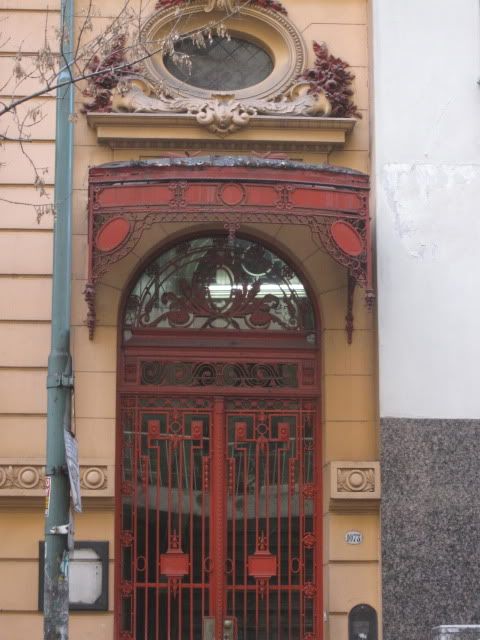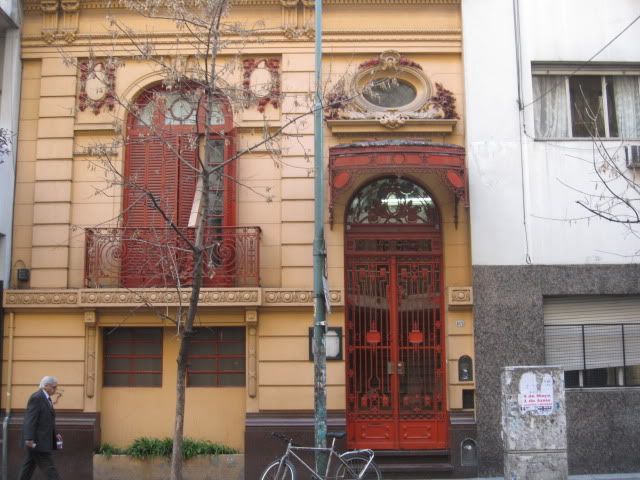"Great" is in the eye of the beholder.
But I cant see how age has anything to do with it.
There were some wonderful buildings built 2000 years ago, and a lot of mundane, everyday structures that were built to be cheap.
In every era, there have been a few really great buildings, and a whole lot of forgettable ones.
Good architecture comes from someone, the "architect" (which meant very different things at different times, but can be condensed into someone who CARES about building) putting their heart and soul into a building.
I have worked professionally with architects for 30 years, and was a partner in an architecture firm at one time, although I am not trained or licensed as one.
And I can tell you that todays architects are no different from architects in any time in history- they run the gamut from clock puncher to genius, they are susceptible to fads and trends, and they include cold hearted businessmen and wide eyed dreamers.
In Buenos Aires today, there are the standard hacks, putting up 20 story apartment buildings on Juan B Justo, and there are others who are pushing the envelope of wonder and space.
A friend of mine, so of course I am biased, is designing a new theater space for inside the old Post Office behind the Casa Rosada-
http://www.b4fs.com/en/proyectos_det.php?cod=005#img3
I think its going to be breathtaking.
In terms of great architecture in Buenos Aires, I would nominate the Palacio Barolo, a distinctly South American take on the fantastic excesses of it era- it combines european influences with the wide open optimism of Argentina at a time when it seemed as if there was no limit.
I love the work of Francisco Salamone- its from the 30's, certainly not "old", but it points to the essence of architecture- drawing the same elements, doors, windows, facades, towers, walls- over and over again, and finding new ways to say the same thing.
Architecture, like art, reflects the unique vision and experience of the designer- and Salamone was a pretty unique guy, again VERY Argentine. His buildings were not the same as similar deco pieces in the USA, or in Italy, or elsewhere.
In many buildings in Buenos Aires, there is an attention to detail and craftsmanship lacking in similar era buildings in the USA. A feeling of pride of european heritage, combined with excellent craftsmen, and and less of a bottom line sensibility.
Look at 30's brick apartment buildings in most american cities, and you dont find marble lobbies with brass rails, wrought iron lighting, wonderful stone and concrete detailing outside, fancifully designe storefronts with curving windows and delicate carving.
Also, since Buenos Aires is a relatively young city, built largely at one time, you have a more cohesive overall urban plan, at least in the center- more like Washington DC, or Hausmanns Paris, with grand boulevards, plazas, and small details that make for a more pleasant layout. I like the myriad reactions to the rule that the corners of buildings in the central city were required to be cut off- at Buenos Aires Photographer, and also at the now gone Robert Wright website, Line of Sight, there were some great photo series of these corners, treated differently by different architects, but allowing a bit of breathing room at a corner, a feeling of humanity, as opposed to the building dominating.
There are a lot of examples of great noveau, provincial, and deco in BA- the Kaufmann building, on Plaza San Martin, for example. El Molino.
When paging thru the two Mimi Bohm books, you find the depth of the bench pretty staggering. I have been visiting Miami regularly since 1980, and seen the bastardising of its art deco heritage- I took walking tours of South Beach with architectural historians back when it was just us, retirees on lawn chairs, and street people- and to compare Buenos Aires with Miami, Buenos Aires might not have the strength of the 3 or 4 remaining great hotels, but the hundreds of small and middle sized deco structures here can definitely compete.
I just toured the cathederal in La Plata- and it is another uniquely argentine hybrid- classical thru a looking glass. Again, great craftsmanship. In the basement museum, the rebuilt tower ornaments owe more than a little to Gaudi- but the whole building is beautiful, and works on its own terms quite well.














